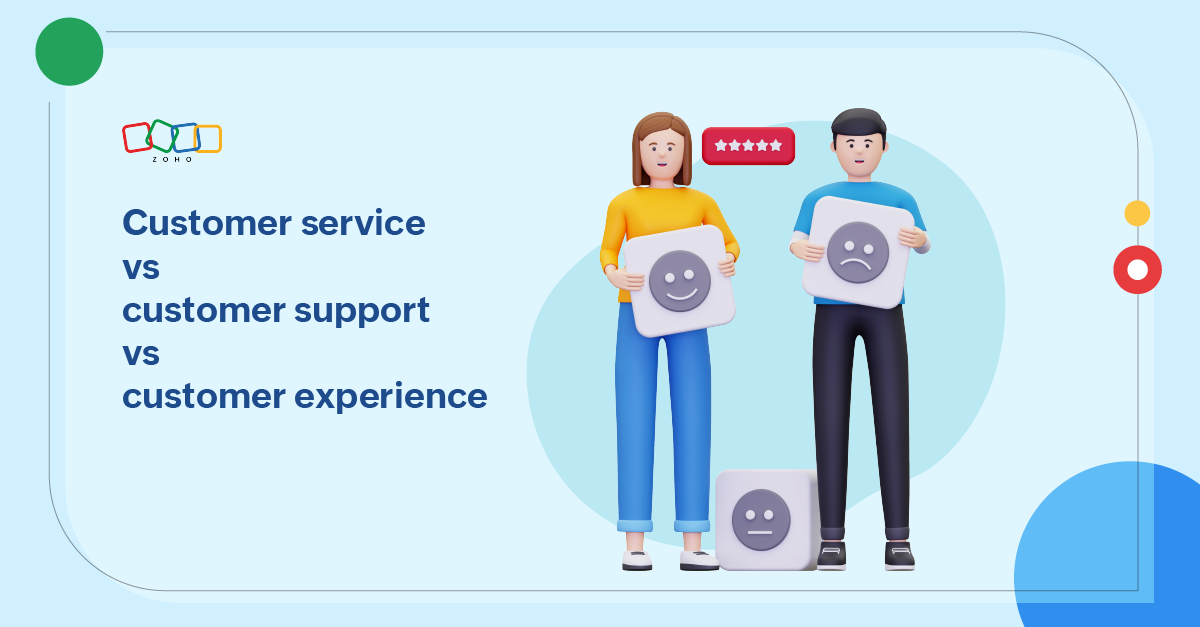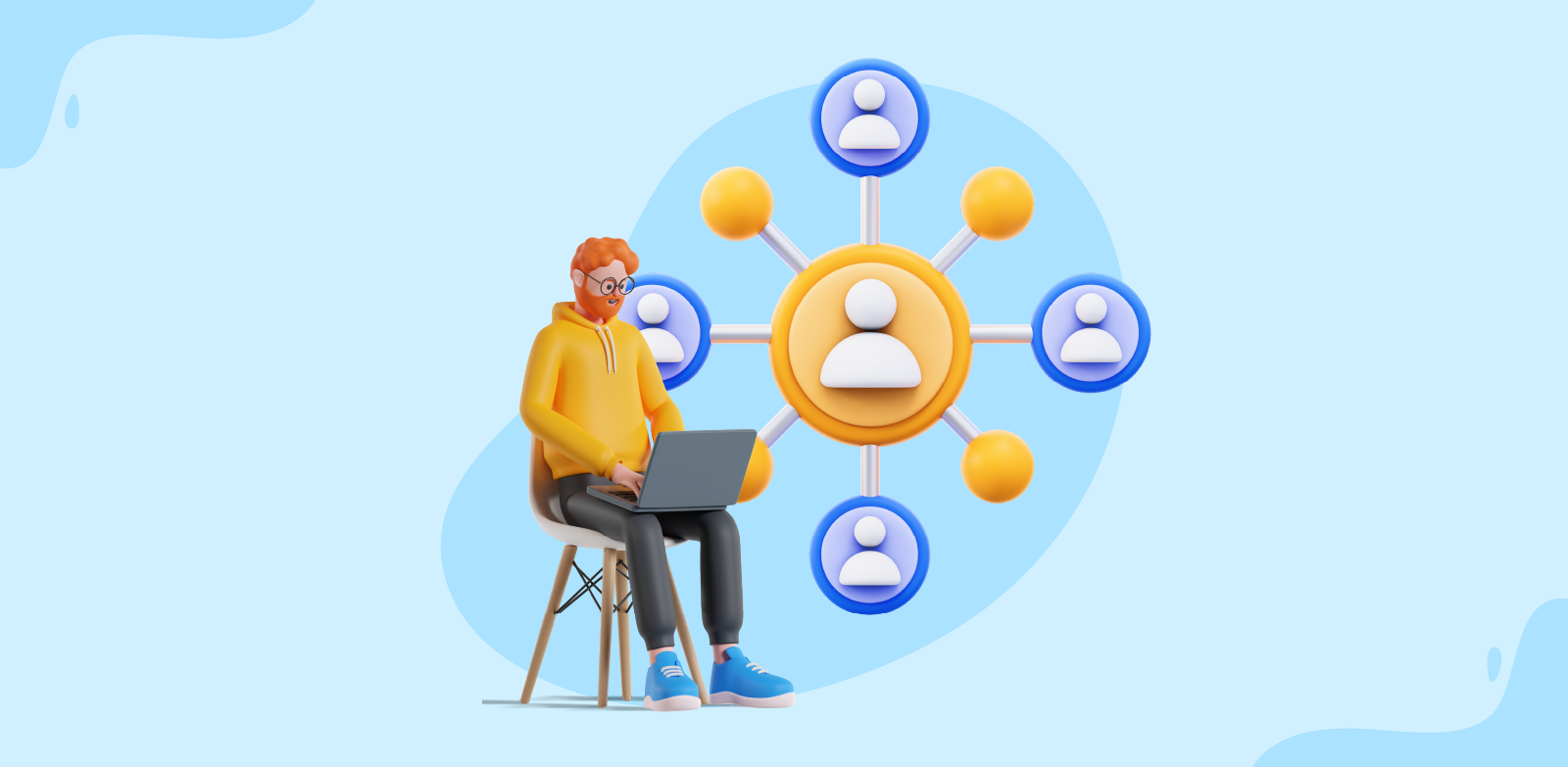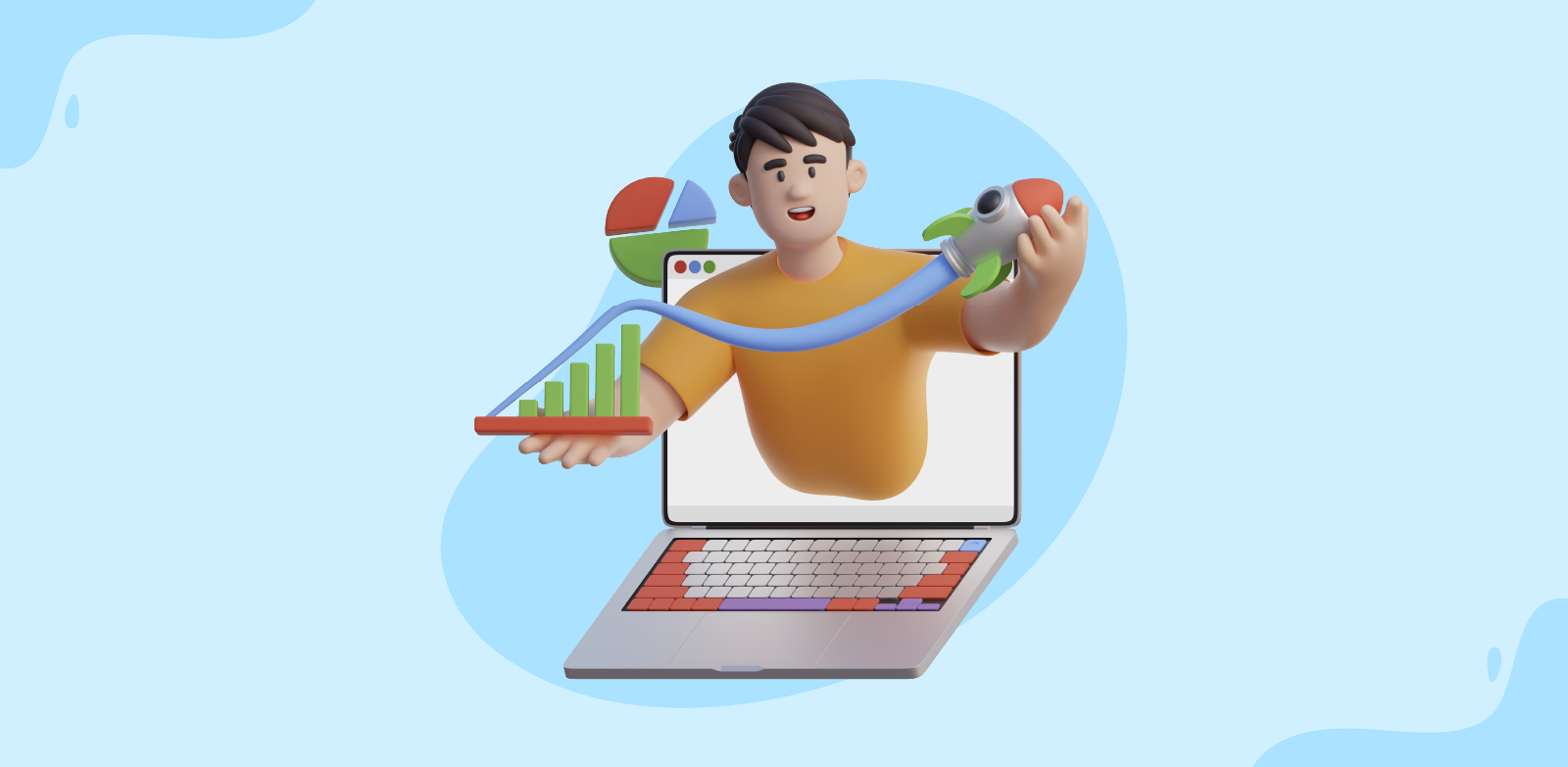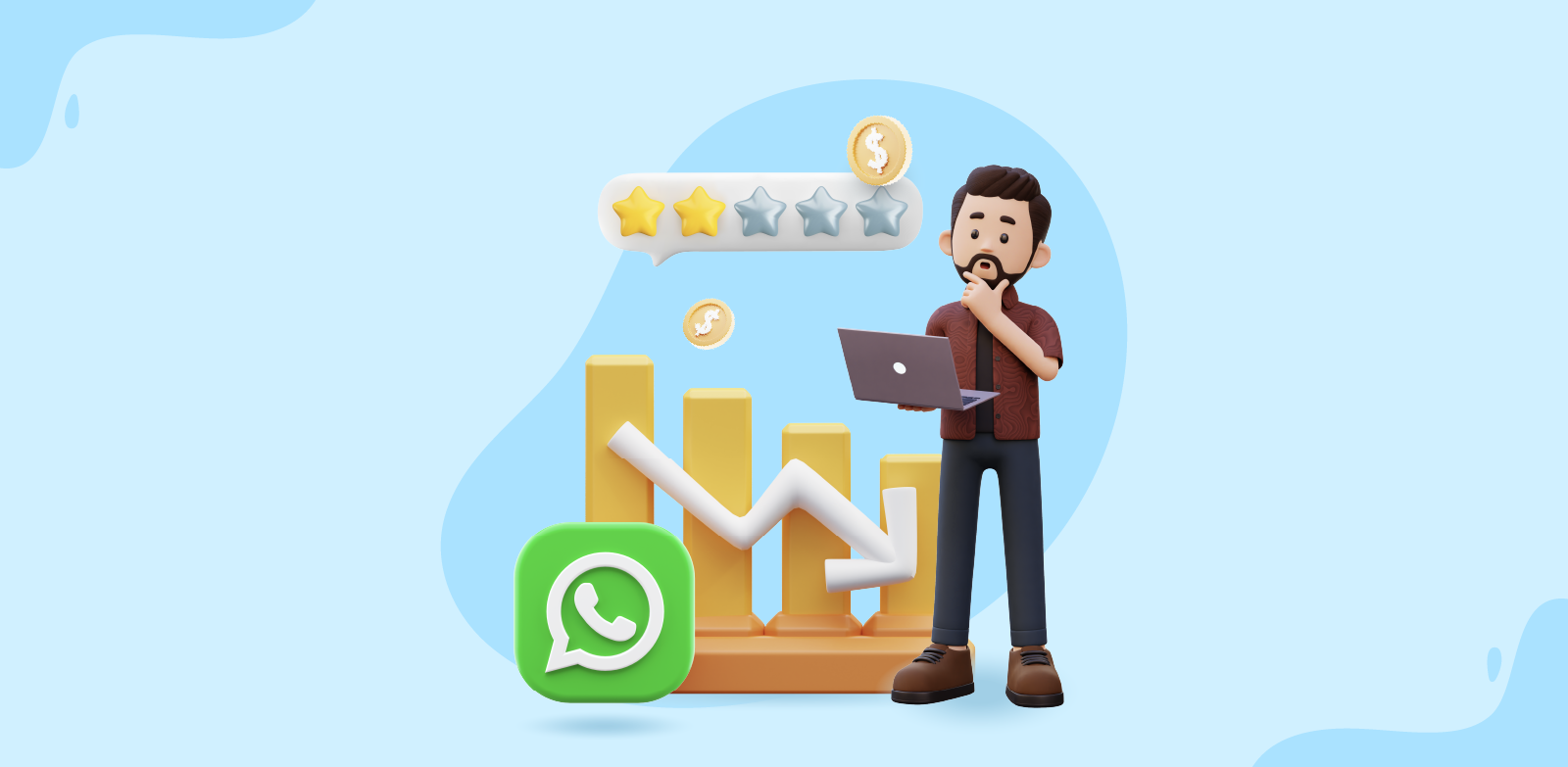- HOME
- Thought leadership
- How may I help you? Support, service, or experience?
How may I help you? Support, service, or experience?
- Published : October 2, 2022
- Last Updated : November 2, 2023
- 703 Views
- 10 Min Read

“Hello! How may I help you?”
The interaction that follows this question could decide the future of the relationship between an organization and its customer.
Most customer-facing personnel who ask this question may not really be prepared for the interaction that follows. They may not be able to identify whether the customer is asking for support, service, or experience, or deliver exactly what the customer wants.
Most companies use the terms customer support, customer service, and customer experience interchangeably. However, in reality, how support, service, and experience are delivered couldn't be more different; the activities of the agents and the tools, resources, and content they use to deliver results and the metrics used to measure their success are poles apart.
Let’s look at these three concepts more closely to understand how they are distinct yet intertwined, and how to leverage them to strengthen the overall customer relationship.
| Customer support | Customer service | Customer experience |
Definition | A subset of customer service—a reactive response to a customer’s query or trouble with the product/service. The focus is on technical queries and troubleshooting, assisting customers in planning, installation, maintenance, upgrading, and disposal of the product.
| A part of a holistic customer experience involving proactive interaction with the customer. The focus is on assisting customers before, during, and after the purchase of a product or service, by educating, recommending, and offering strategic advice. | The end-to-end journey of a customer. It involves continuous interaction and omni-channel communication. The focus is on customer advocacy and omni-channel touchpoints with respect to the collateral, product interface, overall process design, and more. All of the backend teams also contribute to the overall customer experience. |
Use cases | Customer support is essential for organizations with offerings in SaaS, IT, ecommerce, internet/telecom service providers, banks and financial instruments, retail (such as electronic appliances), and more. | Customer service is essential for every industry that serves their customers and aims to maximize the value of the customers. | Customer experience is essential for all the companies that want to elevate their customers’ perceptions about their brand. |
Examples | Sharing masterclass videos of implementation demos. Providing a help guide or product documentation for upgrading new functionalities. Real time troubleshooting via phone or live chat.
| Assisting customers with selecting a suitable subscription plan and onboarding. Responding to customer reviews and comments in the comments section as well as on social media. Helping customers with nontechnical issues like extending the trial period, delivery status, and resolving issues at checkout.
| Having the necessary collateral in place to help prospects with easy purchase decisions. Designing a seamless onboarding or migration workflows. Having the necessary help guides accessible at all the right touchpoints and interactions with the support teams, without switching the tools. |

Stakeholder, stage, and touchpoints:
| Customer support | Customer service | Customer experience |
Stakeholders | The customers seek support when they are facing trouble using the product. In B2B use cases, the stakeholders could be those configuring the product on the client side, or the end users of the product. | The stakeholders requesting services could be different along the product lifecycle. In B2B, the product evaluation team, the asset management team, and the end users of the product are all stakeholders. In ecommerce, it could be the same customer/user seeking service for different products over a period of time. | Customer experience is the cumulative effect of service interactions. The stakeholders include everyone that interacts with the systems, channels and products, besides those actually reaching out for customer support. In B2B, client developers who build onto the product, clients’ channel partners, and admins who configure the tool are all key stakeholders. |
Stage and severity | Issues that occur while the product or service is in use are more severe than support requests during other stages (implementation, upgrading, integration, maintenance, etc). Disruption in the product or service could cause disruption to business continuity. In such cases, support needs to be given in real time. Also, the severity depends on the nature of the issue for which support is being requested. Subjects such as vulnerabilities, bugs, and PII are high priority. B2B offerings are often required to commit to a service level agreement (SLA) to assure availability, timeliness, and quality of service/support. | Customer service can be raised at any stage of the customer lifecycle, from a request for information/request for proposal (RFI/RFP), onboarding, to upgrading. The severity depends on stage and context. Stage: If the issue is with the payment page or when the user is trying to upgrade their trial version, the issue can be considered a priority for the business. Context: For the customer, the severity of the service request depends on the context and could differ from industry to industry. Depending on the industry (such as healthcare, travel, or hospitality) service requests are also time-sensitive and high priority. | Customer experience involves continuous interactions with the vendor’s business at every stage of the journey—marketing, customer service, sales, finance, operations, support, development, and more. For example, in a B2B scenario, a positive customer experience is the smooth transition of customers from one stage to another:
|
Touchpoint | Support to the customer should be made available from within the product using live chat or chatbot. Necessary content assets and help documents should be funneled into the access channels within the product. Customers can reach out to support teams for functionality requests via email. Support requests can be raised on community pages or social media forums. Most B2C businesses, such as banks and telecom/internet providers, have dedicated support pages on platforms like Twitter. They also facilitate interaction with the support/service through their dedicated mobile applications. | Customer service should be made accessible across multiple touchpoints, such as the organization's website, social media pages, and other affiliate pages by providing multichannel engagement via chatbot, live chat, phone, email, social media messenger, comments, etc. Page-specific content, such as FAQs for pricing, availability, store information, shipping, returns, refunds, etc., should be made available on the corresponding pages. Negative reviews and comments on social media and forums should also be used by customer service agents to address the pain points. | Businesses must ensure customer experience across multiple touchpoints, such as blogs, ad banners, landing pages, comparison pages, checkout pages, social media posts, tracking pages, feedback pages, and more as the customer encounters different departments. Omnichannel engagement: The key to creating a good customer experience is to ensure all of the different customer interaction points are linked up. This will allow customers to jump between touchpoints. The customer-facing agents will have the history and context across the various touchpoints. |

| Customer support | Customer service | Customer experience |
Customer representatives
| The agents (personnel) in customer support are required to provide quick and accurate solutions to issues that are technical in nature. Agents are expected to have a complete understanding of the product, including its functions, applications, use cases, and the ability to guide customers in troubleshooting the issue. The agent should be empathetic of the implications (both business and personal) the issue the customer is facing could have. Most B2C business and service providers, such as hospitality, travel, retail, etc., don't have a separate customer support function. | Customer service is an overarching role, and the customer service agents are required to assist customers on all issues related to the business, its products, and customer contact channels. Team and knowledge base: Agents are expected to have a complete understanding of all the departments and to know where to point customers for more expert assistance. Also, agents should have access to the entire knowledge base to be able to share references with customers. Small support teams have the same agents take care of both support and service functions in their organization. | Besides support/service, the personnel responsible for the customer experience are: Content management teams who generate and manage customer-centric content. The marketing team that targets customers in promotions. Sales teams. Project managers, UI/UX designers, and developers who design and develop the product for the customers. Logistics teams responsible for delivery (in retail and ecommerce use cases). Everyone else that is directly or indirectly responsible for the customers’ experience. |
Collaboration within teams | The customer support team is part of a larger customer service team. Support agents should also be closely associated with the production, development, engineering, and IT teams so that they are aware of any downtime or internal maintenance, and also have a roadmap of feature and functionality releases. In return, support agents provide customer feedback to product development teams. | The customer service agents should engage with multiple departments within the organization to address the customer queries along their lifecycle. In the evaluation stage, they liaison with the sales/presales teams to convert prospects into customers. They engage with the digital/social media teams to keep track of customer issues posted on social media. | Companies need to proactively anticipate the customer’s needs and expectations, as well as identify and iron out problems (even before they reach customer service/support teams) not only related to the product, but also in the emotional aspects of the customer. All of the teams mentioned in the point above have to come together in a unified way to deliver a positive experience. |
| Customer support | Customer service | Customer experience |
Tools | Customer support agents share most of the operational tools and engagement channels with customer service teams. Customer engagement channels: Chat built into the product (customers engage with a support agent over live chat or raise a support ticket on chat) Customers can raise issues or tickets over an email, using a dedicated customer support phone line, or social media-dedicated support handle. Support tickets management: Ticketing/help desk software is used to handle large volumes of support tickets across multiple channels. These tools organize and prioritize tickets, track time (SLAs), and offer diverse functionalities depending on the teams’ maturity. Smaller support teams use email or email management tools, such as a shared inbox, that double as a lightweight customer engagement tool to handle customer queries. Internal communication: For internal collaboration, teams use an internal chat channel or email. Remote support: For complex B2B scenarios, support agents use remote access software to gain remote access securely and fix issues. Self-service and knowledge management: The customer service and support teams should have a well-defined knowledge repository in place to help customers with self-service. Integration with systems such as issue management, bug tracking, and project management will help support teams escalate issues and take them to the product/development teams without dropping the ball. | Customer engagement channels: Besides the usual support channels, customer service teams should also enable multichannel engagement with customers from across multiple touchpoints. Focus on messenger applications like WhatsApp, Instagram, and Facebook Messenger, and community platforms like Reddit, Quora, and Stack. Product review and comments section. Chatbot and interactive voice response (IVR): for common or known issues and standardized assistance that does not require human intervention, chatbot and IVR can be programmed to assist customers with their issues.
| Omnichannel engagement and context: The key to the good customer experience is making sure all of the different customer interaction points are integrated. Agents should have the history and context of customers with their organization across the various touchpoints. Helpdesk tools and shared inbox tools are now enabling agents with better context. Shared inbox: Internal team collaboration is the most important aspect of customer-facing teams that need to refer to and discuss customer issues with different teams across the organization. Shared inboxes offer such functionalities as group inboxes, organizing customer communication and collaboration, and omnichannel engagement for seamless internal collaboration. They also double as a lightweight help desk for smaller teams. Customer feedback tools are built into customer engagement channels, so agents can deliver an improved experience. Integration with status management: Support agents have to leverage infrastructure and application dashboards. Alarms keep track of the availability and performance of applications and infrastructure, and give customers precise information about status and downtime. (Ex-agents can keep track of payment gateways and guide customers in successful payment processing.)
|
Content/ Knowledge articles | Customer support agents should have a deep knowledge of the products and services offered by their company. Their role may also include creating and managing product-related articles including:
| Customer service agents should have access to and manage the entire organization’s knowledge base. Besides product-related articles, they should manage and organize blogs, pricing pages, comparison pages, explainer videos, and more. For B2B product/service: ROI calculators, testimonials, analyst reports, and case studies. For retail/e-commerce, the customer service teams should have details on store location, availability, size, colors, etc. | Besides company-generated content, the service/support agents should manage customer-generated content. (e.g., in B2C, use cases, customer blog reviews, video reviews, and social media posts involving the product/service). They should also keep track of conversations on social media and other communities for further reference. |
Measure | Some of the most critical key performance indicators (KPI) a company should consider when evaluating their customer support are:
| Customer service measures effectiveness, by tracking transactional metrics such as:
| Overall customer experience will lead to bottom-line growth of the organization. One metric that is a true measure of customer experience is: Customer lifetime value (CLV). It's a prediction of the net profit attributed to the entire future relationship with a customer.
|

https://www.superoffice.com/blog/customer-experience-strategy/
Although customer support, customer service, and customer experience are three distinct concepts, they cannot be viewed in silos. Customer support and customer service teams are highly interdependent. Quite often the issues picked up by the customer service teams are transferred to the customer support teams. In some organizations, there are no dedicated teams—depending on the organizational dynamics, the development team takes care of product-related issues, or the sales/presales teams take care of the nontechnical issues. Irrespective of the organization's size and maturity, all of the functions in an organization are responsible together for a seamless customer experience.
- Sandeep Kotla
Sandeep is an inbound marketer with Zoho Corporation. Previously, he handled analyst relations and corporate marketing for ManageEngine (a division of Zoho Corp) and its suite of IT management products. He currently spends most of his time re-imagining and writing about how work gets done in large organizations, reading numerous newsletters, and Marie Kondo-ing his inbox.


